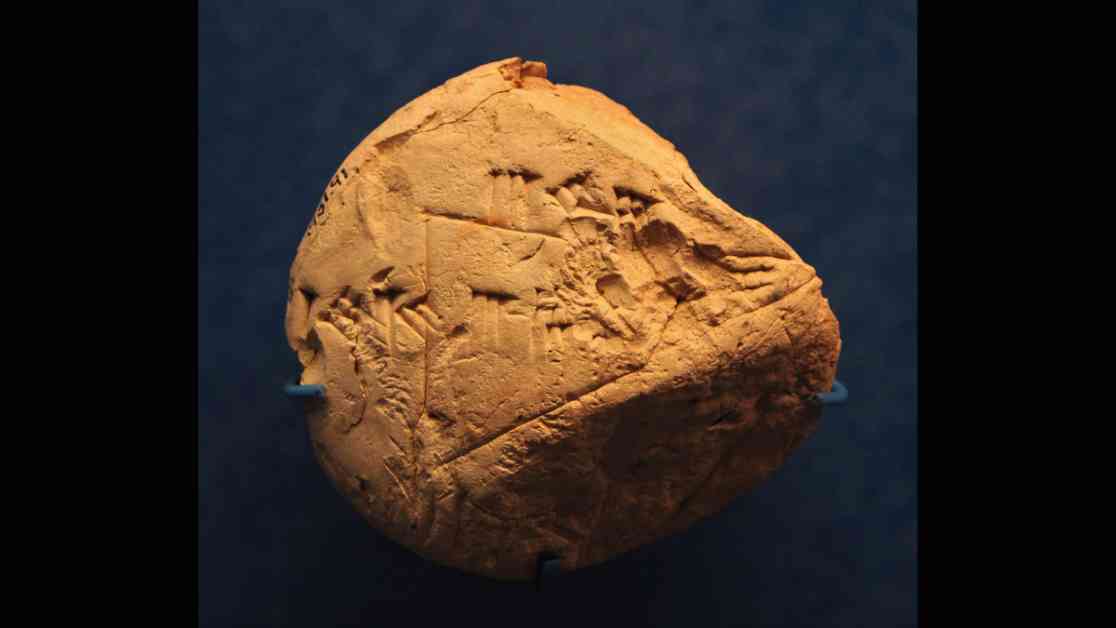Ancient Babylonian Tablet Reveals 4,000-Year-Old Geometry Error
In the heart of modern-day Iraq lies a fascinating piece of history that has recently come to light – an ancient Babylonian tablet showcasing a stunning geometry error from over 4,000 years ago. This cuneiform mathematical clay tablet, discovered in Tell Ingharra, Kish, dates back to the Old Babylonian period between 1900 and 1600 B.C. and has shed light on the early development of mathematics in the region.
The Curious Case of Babylonian Geometry Homework
The tablet, now housed in the Ashmolean Museum at the University of Oxford, stands as a testament to the ancient Babylonian civilization’s grasp of mathematics. Measuring a mere 3.2 inches in diameter, the tablet features a right triangle with cuneiform numbers along its sides, representing the length, height, and area of the triangle. However, a glaring mistake in the student’s calculation of the triangle’s area has puzzled historians and mathematicians alike.
On the tablet, the student recorded the height of the triangle as 3.75 and the base as 1.875, leading to an expected area of 3.5156. However, the student miscalculated the area as 3.1468, leaving behind a lasting error that has endured through centuries.
Insights into Ancient Mathematics Education
This discovery provides valuable insights into the early days of mathematics education in ancient Babylon. The tablets found at Kish and nearby Babylon serve as ancient “scratch pads” used by students and teachers to practice mathematical concepts. The emergence of mathematics education in Babylon coincided with the rise of large empires, signaling a shift from oral traditions to written records for passing on knowledge.
Ancient Babylonian mathematics, with its base 60 number system, laid the foundation for modern-day timekeeping. Additionally, the Babylonians’ understanding of the Pythagorean theorem predates the famous Greek philosopher Pythagoras by over a millennium, showcasing their advanced knowledge of geometry and algebra.
The Legacy of a Geometry Error
As we marvel at the intricate details of this 4,000-year-old clay tablet, we are reminded of the enduring legacy of ancient civilizations and their contributions to human knowledge. The discovery of this geometry error not only highlights the evolution of mathematical education but also underscores the importance of written records in preserving cultural heritage.
Next time you calculate the area of a triangle, remember the Babylonian student whose error has stood the test of time, serving as a poignant reminder of the journey from oral traditions to written knowledge. Let us continue to explore the mysteries of the past, one ancient tablet at a time.










